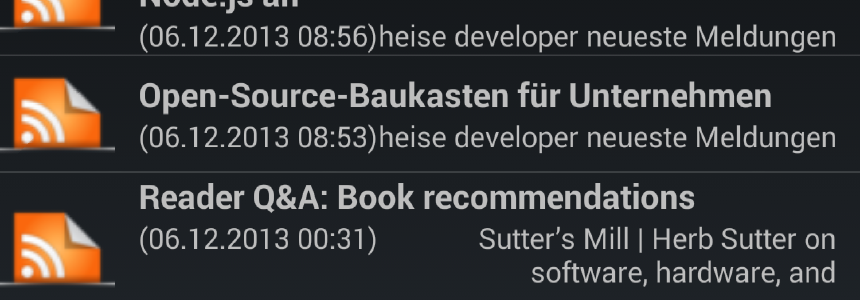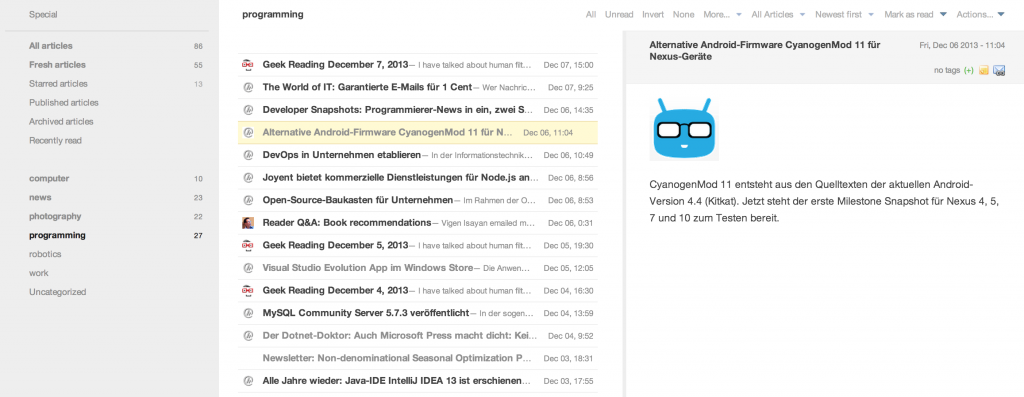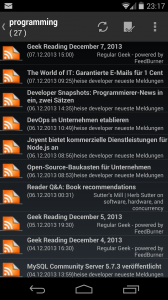2 minutes
My own cloud: Tiny Tiny RSS

In the light of the recent NSA issues I have been reconsidering whether I really need to use public cloud services or not. The main benefit that I see in publicly provided services (despite the technical setup) is large amount of users that potentially enhance the service. There needs to be a tradeoff between these benefits and the data that one gives away to the service providers etc.
One kind of service I have been using for some time now is a news feed reader / aggregator. First Google Reader and after the shutdown Feedly. I never used any collaborative feature for a news feed reader, so there is really no benefit in using a public service despite the setup overhead. So I started to search for a privately hosted alternative. Basically I had only a few requirements:
- Synchronization between different clients
- Web front-end
- Android front-end
- Flagging articles as important or read later
With these requirements I ended up with Tiny Tiny RSS. Tiny Tiny RSS is a PHP-based web-service providing a comparable service like Google Reader and Feedly did. Moreover, several front-ends exist, e.g. for Android.
I am using Tiny Tiny RSS now for several weeks and I am quite satisfied. The service works very reliable so far without any issues. The setup itself was simple following the installation guide. The default theme for the web-interface looks a bit oldish, so one modification I did was installing tt-rss-feedly-theme, which provides a Feeldy-like style:

For mobile reading on my Andoird devices I am using TTRSS-Reader. Instead of the “official” open source Android client , which for strange reasons requires a payed unlock for full functionality, this one is completely free and works well. Swiping between articles could be a bit smoothers and there is sometimes a rendering bug when going back to the article list. But apart from that, everything works well.

So, Tiny Tiny RSS works very well for me and I do not miss anything I previously had with Google Reader or feedly. There are also a lot of other front-ends available other than the ones I have shown, which allows for a lot more customization.
cloud feed feedly google reader RSS tt-rss
358 Words
2013-12-08 00:00 (Last updated: 2021-04-30 20:40)